What you need | Slow-cooker method | Stovetop method | Electric infusers | Decarboxylation | Calculating the potency
If you’re like us, there came a time in your cannabis journey when you wanted to start experimenting with edibles but weren’t sure where to start. You heard that one horror story from a friend about when they got too high from an edible and freaked out, so you’re kind of nervous. Everyone tells you it’s hard to know how much you’re really consuming with edibles, but nonetheless you’re interested.
You head to the dispensary and find a lot of options, but are taken aback by the prices, the tax, all of it. “Couldn’t I just make my own cannabutter for cannabis edibles?” you ask. Well, yes. Yes, you can. And we’re here to help you do it. While it may be somewhat of a scientific procedure, there’s no reason making cannabutter or weed butter from scratch should be something that’s portrayed as scary or unachievable. All it takes is a little focus, some tools, and a few hours to spare – although you can totally multi-task while your cannabutter is infusing!
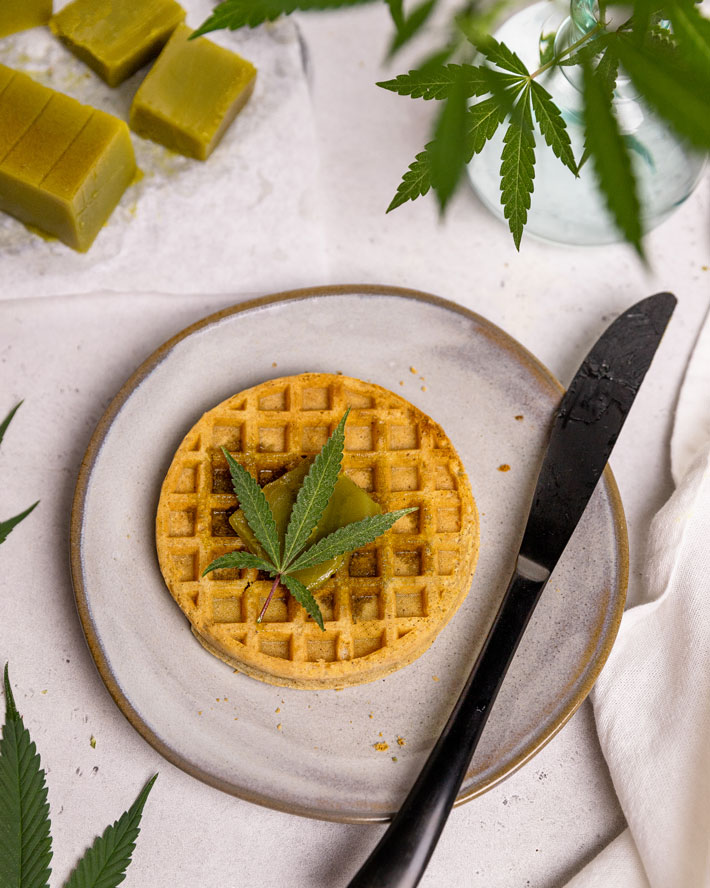
What You’ll Need to Make Cannabutter from Scratch
There are a handful of tools you will need to seamlessly make cannabutter from scratch. Chances are, you may have some of these items lying around your kitchen already! Here, we share a very basic method that involves common kitchen items.
Tools:
- Crockpot or slow cooker
- Baking sheet
- Parchment paper
- Grinder
- Pastry thermometer
- Cheesecloth
- Rubber band
- Sealable jar
- Butter stick mold (optional)
Ingredients:
- 3 cups unsalted butter
- 17-30g cannabis flower, depending on strain potency and preference
How to Make Cannabutter (5 Steps)
There are two common ways to making weed butter: The slow-cooker method (most popular) and the stovetop method.
Cannabutter Recipe: Slow-Cooker Method
Step 1: Decarb your cannabis
- Preheat oven to 240℉ and line a baking sheet with parchment paper.
- To decarb your cannabis flower, grind flower in small batches. Spread it evenly on your baking sheet. Bake for 40 minutes, stirring halfway through.

Step 2: Melt butter
- Set slow cooker to high and add your butter. Cook, stirring occasionally, until butter is completely melted.
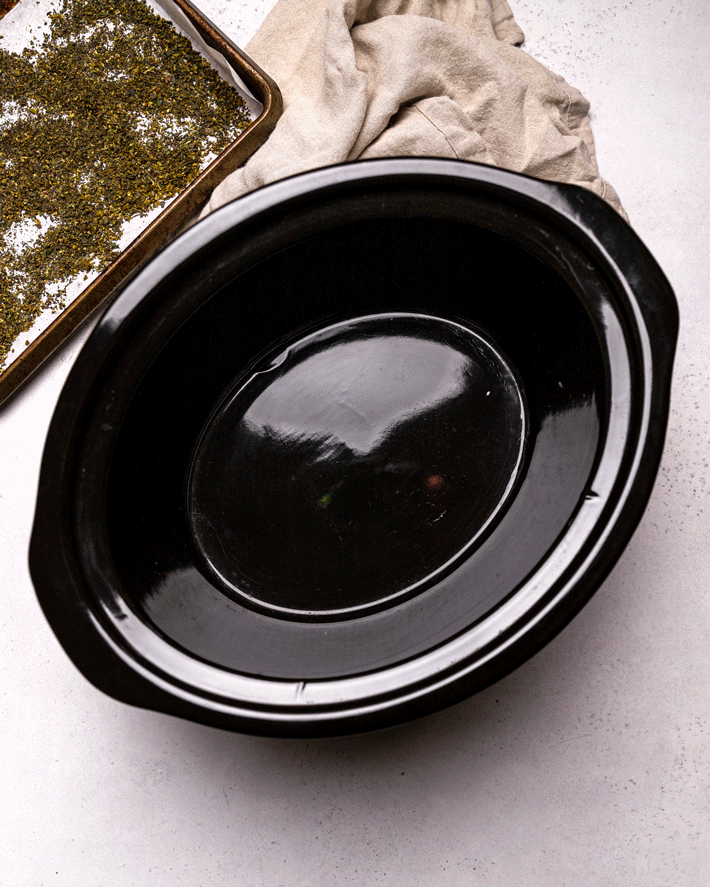
Step 3: Slow cook for 3-4 hours
- Switch heat level to low and add decarbed cannabis to melted butter. Stir until fully incorporated.
- Put the lid on and cook on low for 3-4 hours. Stir the mixture regularly and check the temperature regularly so it doesn’t burn. If you find the mixture rising above 200℉-220℉, set slow cooker setting to “Keep Warm” for 15-20 minutes to cool off slightly.
- Once the mixture has cooked for 4 hours, turn heat off and let cool to a temperature it can be handled.
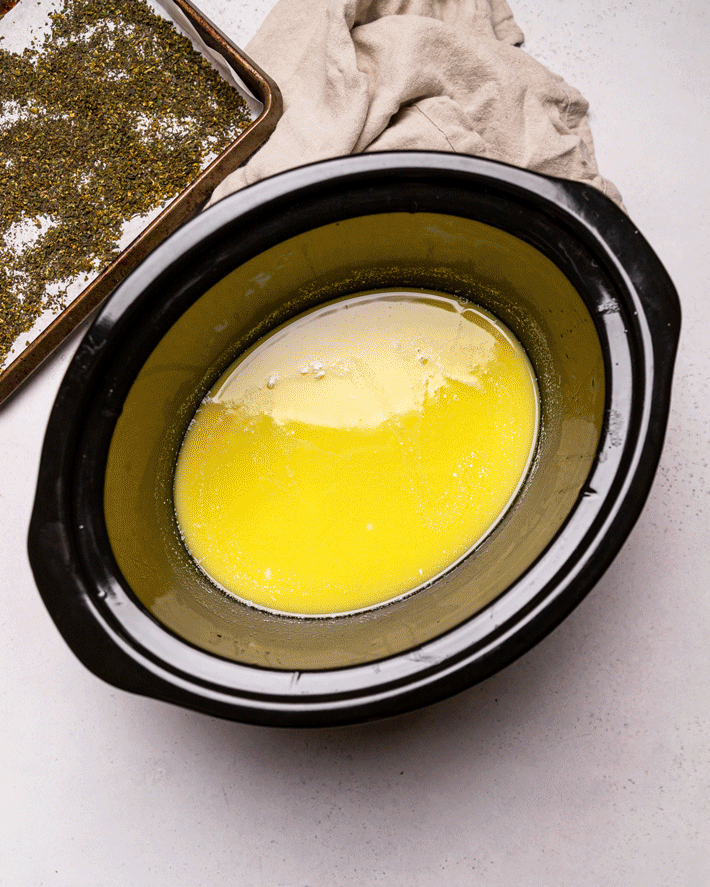
Step 4: Strain cannabutter mixture
- To strain your cannabutter mixture, wrap a double-layered piece of cheesecloth around a jar or bowl.
- Secure the cheesecloth with a rubber band, leaving some slack so the mixture can hold your plant matter and drain. Pour cooled butter mixture through cheesecloth. Once all has been poured in, remove the rubber band and pull the ends of the cheesecloth together.
- Lightly squeeze the leftover plant matter to get some remaining butter out, but don’t wring it out tightly or your mixture can become too bitter.
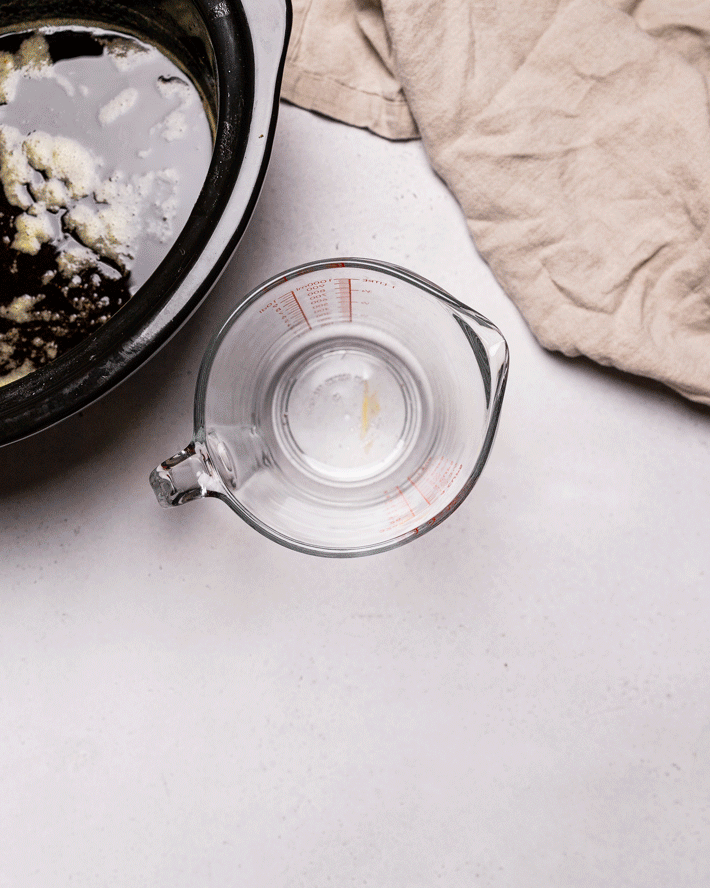
Step 5: Store
- You can store your butter in the jar you strain it into, or you can transfer the mixture to butter stick molds.
- If you choose to do this, just pour the mixture into the molds and set in the fridge to harden for a few hours.
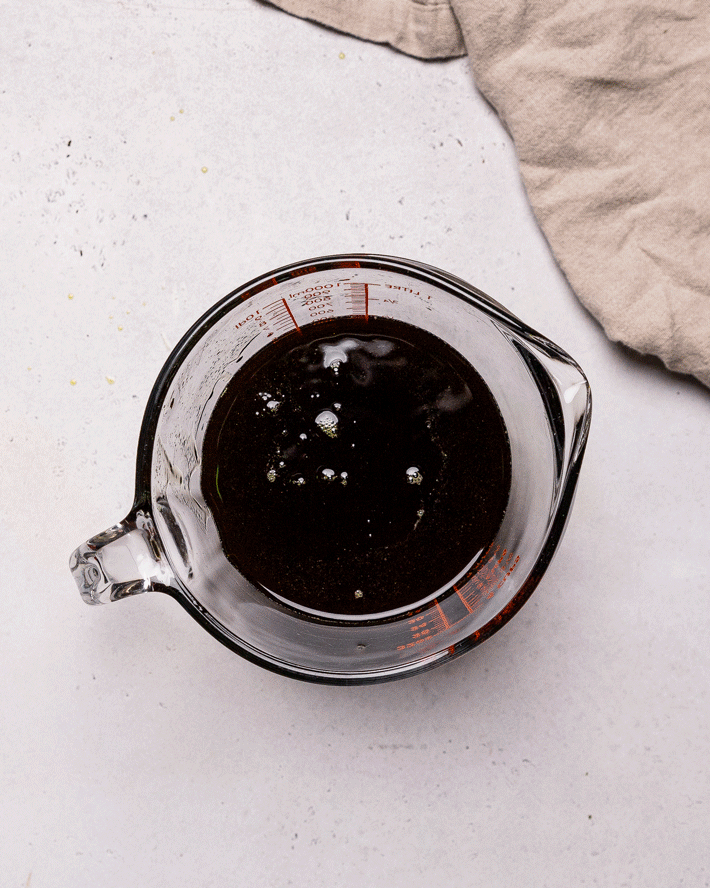
Cannabutter Recipe: Stovetop Method
Step 1: Decarb cannabis
Preheat oven to 240℉ and line a baking sheet with parchment paper. To decarb your cannabis flower, grind flower in small batches. Spread it evenly on your baking sheet. Bake for 40 minutes, stirring halfway through.
Step 2: Melt butter
In a large stockpot over low heat, add butter and melt completely.
Step 3: Simmer on low for 3-4 hours
Once butter is melted, add decarbed cannabis. Stir to combine. Simmer on low for 3-4 hours, stirring frequently. Check the temperature regularly so it doesn’t burn. You want the temperature to not exceed 200℉-220℉ to preserve the flavor and effects of the plant. Allow the mixture to cool slightly once the time is up.
Step 4: Strain cannabutter mixture
To strain your cannabutter mixture, wrap a double-layered piece of cheesecloth around a jar or bowl. Secure the cheesecloth with a rubber band, leaving some slack so the mixture can hold your plant matter and drain. Pour cooled butter mixture through cheesecloth. Once all has been poured in, remove the rubber band and pull the ends of the cheesecloth together. Lightly squeeze the leftover plant matter to get some remaining butter out, but don’t wring it out tightly or your mixture can become too bitter.
Step 5: Store
You can store your butter in the jar you strain it into, or you can transfer the mixture to butter stick molds. If you choose to do this, just pour the mixture into the molds and set in the fridge to harden for a few hours.
Using an Electric Infuser to Make Cannabutter
There are many electric infuser options on the marketplace these days, from LEVO and Ardent to ONGROK and Magical Butter. While some may have more capabilities than others – like the ability to decarboxylate, and bake within the device – they all allow you to create your own weed butter and canna-oil at the press of a button. While it’s still necessary to decarboxylate your flower in some form or another for optimum taste and effect, using an electric infuser makes the process a bit more convenient. I find that a machine can also cut down the pungent aroma that can sometimes take over your whole house while making infused treats.
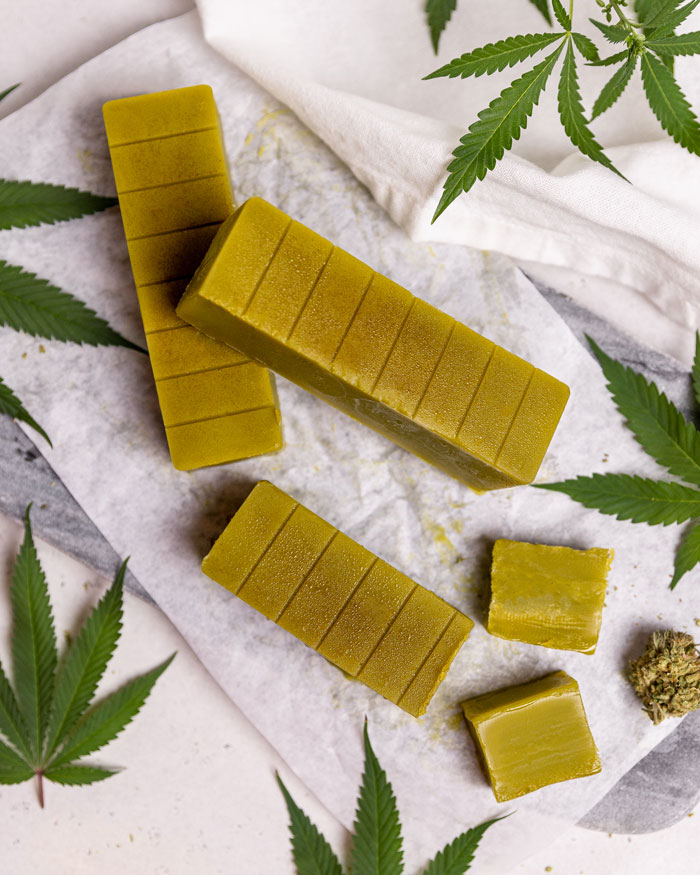
These machines also address another common concern when making cannabutter, which is temperature control. When heating over the stove or in a slow cooker, you have less control over the temperature of your mixture. Whereas when using an electric infuser, the machine automatically regulates the temperature for you at the press of one button. If you are the type of person who prefers to consume cannabis through homemade edibles rather than smoking, an electric infuser might be a good investment.
Electric infusers on the market today seem to be designed one of two ways. There is a more basic version where you still decarb your cannabis in the oven, transfer your flower and oil or butter to a base, and secure it with a top that has a blade on it. This type of machine takes care of the herbal infusion and temperature control, but must still be strained manually. The upper echelon of infusers will allow you to decarb, infuse, strain, and sometimes bake all in one machine. Given that straining is debatably the messiest and most labor-intensive part of making cannabutter, having this additional capability makes the cannabutter process even easier.
Pick Up Quality Cannabis Flower for Your Cannabutter
The first step in making cannabutter is of course procuring some high quality cannabis flower. One key thing to remember here is that quality is important – the quality of your cannabis flower will not only impact the taste, but also the effects of your cannabutter edible. While you can mask the flavor of your marijuana butter somewhat, depending on what you make with it, opt for a strain you’ve tried before and know you like.
Also, get a good quality butter. The other item that makes a big difference in the quality of your edibles is the quality of your butter. Not all butter is created equal, so we always look for a high quality brand like Kerrygold or Vital Farms, and we typically use unsalted butter so it can be used for a variety of applications.
Decarboxylation
Once you’ve sourced your cannabis and your butter, it’s time for one of the most often missed steps in making cannabutter: decarboxylation. This important step is crucial for starting the conversion of THCA to THC, therefore activating the psychoactive properties of your cannabis flower, which is the reason we’re making edibles in the first place, right? If you don’t decarboxylate your cannabis properly, your edibles may not have the effect you’re looking for – plain and simple! Luckily, this step is easy and just involves grinding your cannabis flower and letting it bake at a low temperature for an extended period of time. Learn more about how to decarb your weed the easy way.
Calculating the Potency of Your Cannabutter
There is a thing as becoming too high from an edible, and my 18-year-old self can attest to this. If you’re a beginner with cannabis edibles, the best way to ensure you have a good experience is to start small and work your way up, which is something I did not do.
There are some complex mathematical formulas we could share to calculate the estimated potency of your THC butter, but the truth is that since you’re creating this at home and you probably don’t have a potency lab in your basement, you may not be able to calculate the exact amount of THC per serving.
This is because there are several factors out of your control that can lead to varying potencies, including cook time, method, and temperature. Some edible dosage calculators can make the process easier and help you get a more accurate estimate of the potency of your THC butter.
This is the part of making cannabutter that can worry some people, but it’s important to remember that the most impactful cannabis consumption is done mindfully. Slow and steady wins the race, and there is no shame in testing a bit of your cannabutter on a slice of toast and journaling your reaction to gain insight on how a full portion may affect you.
You might be thinking, well isn’t this why I should be buying my edibles at the dispensary, where they “clearly” mark the potency? We hope no one comes after us, but there’s always the chance of potency variation in cannabis edibles, even when they’re purchased at a legal dispensary.
